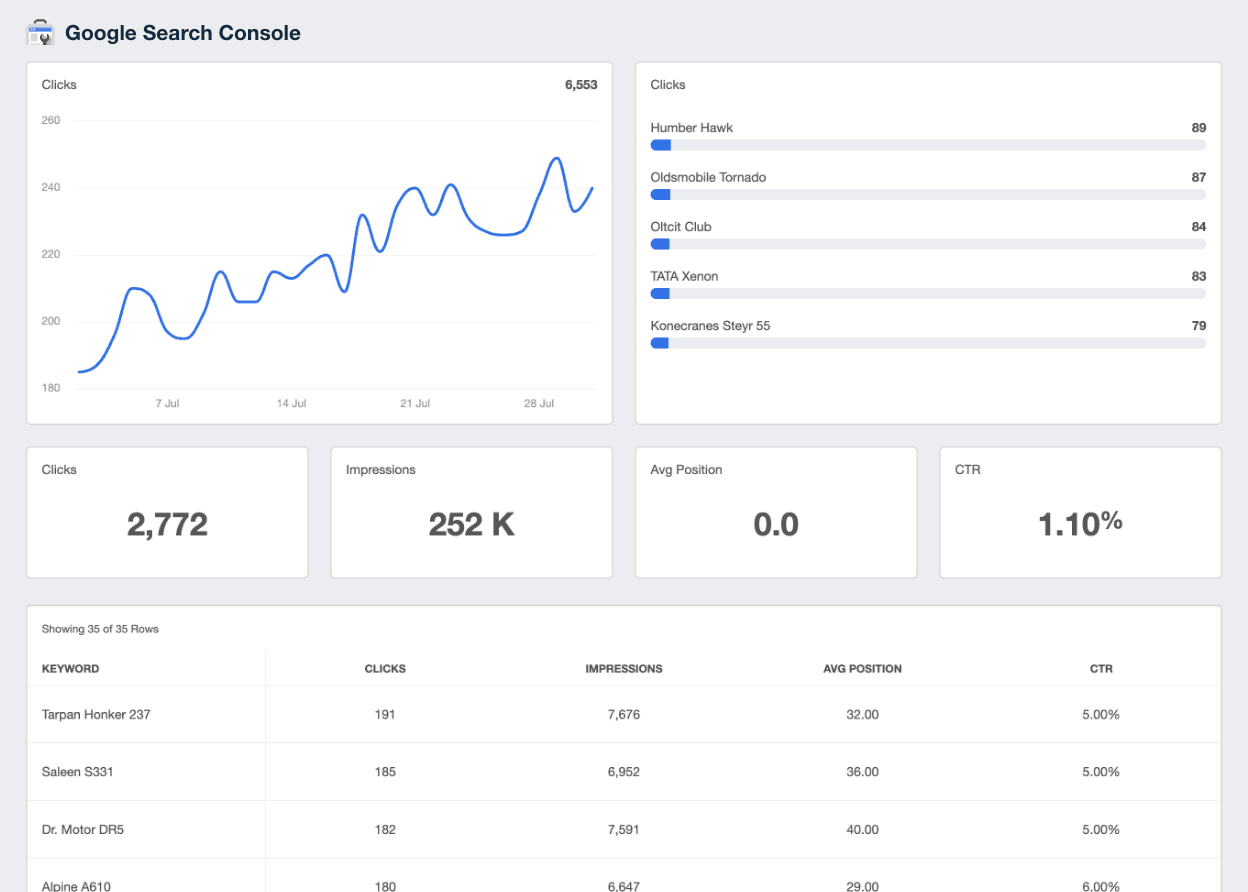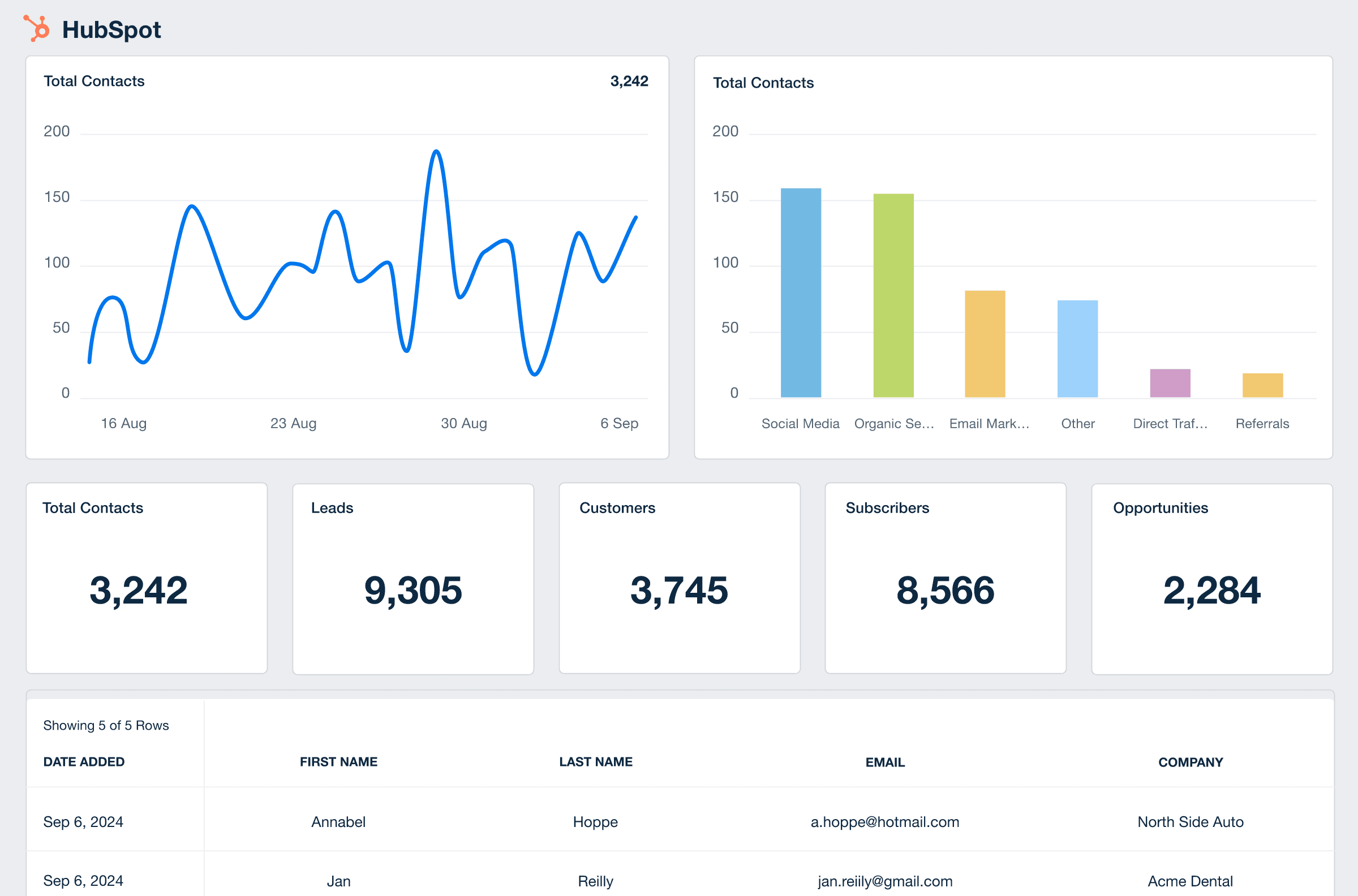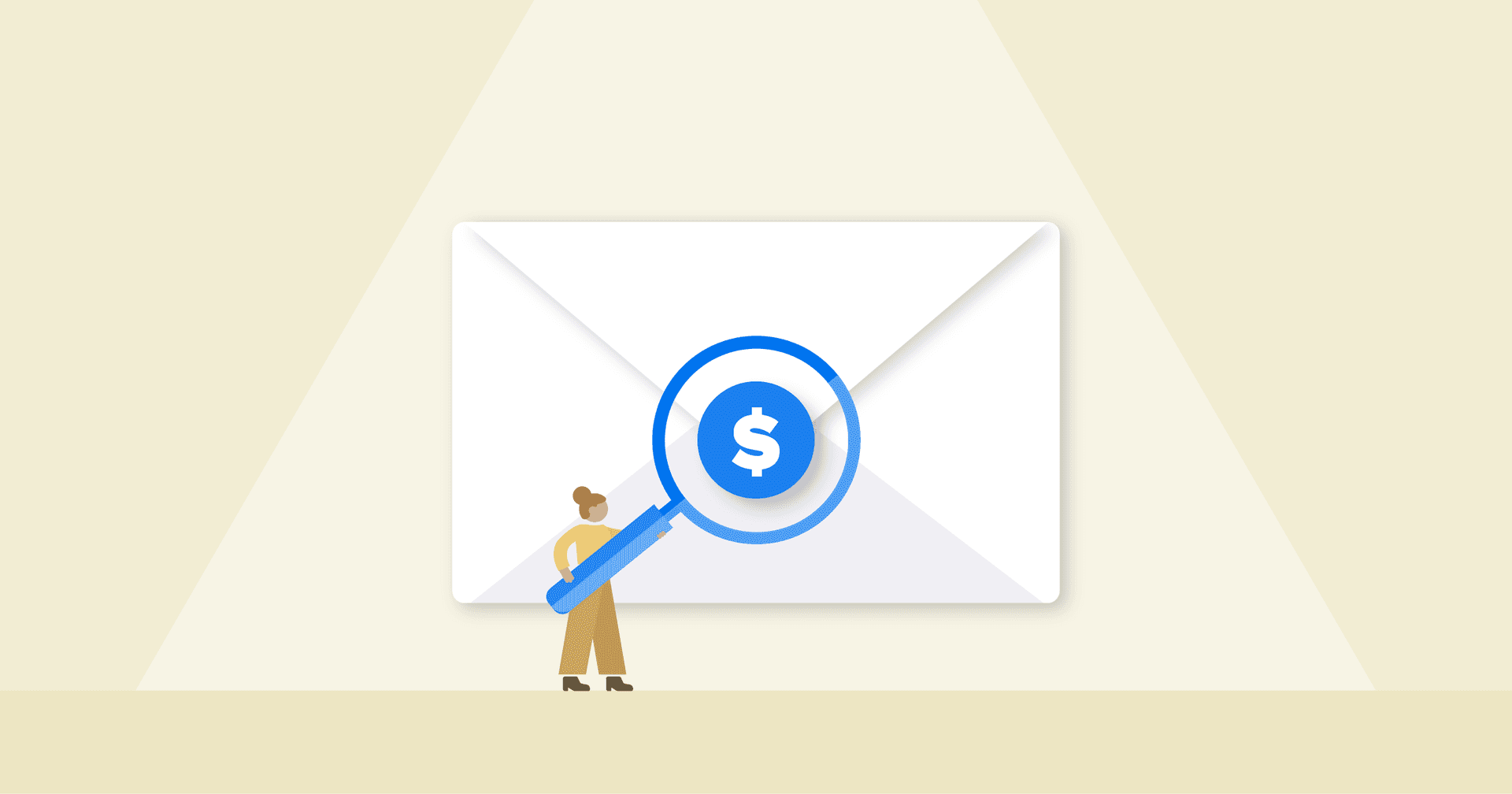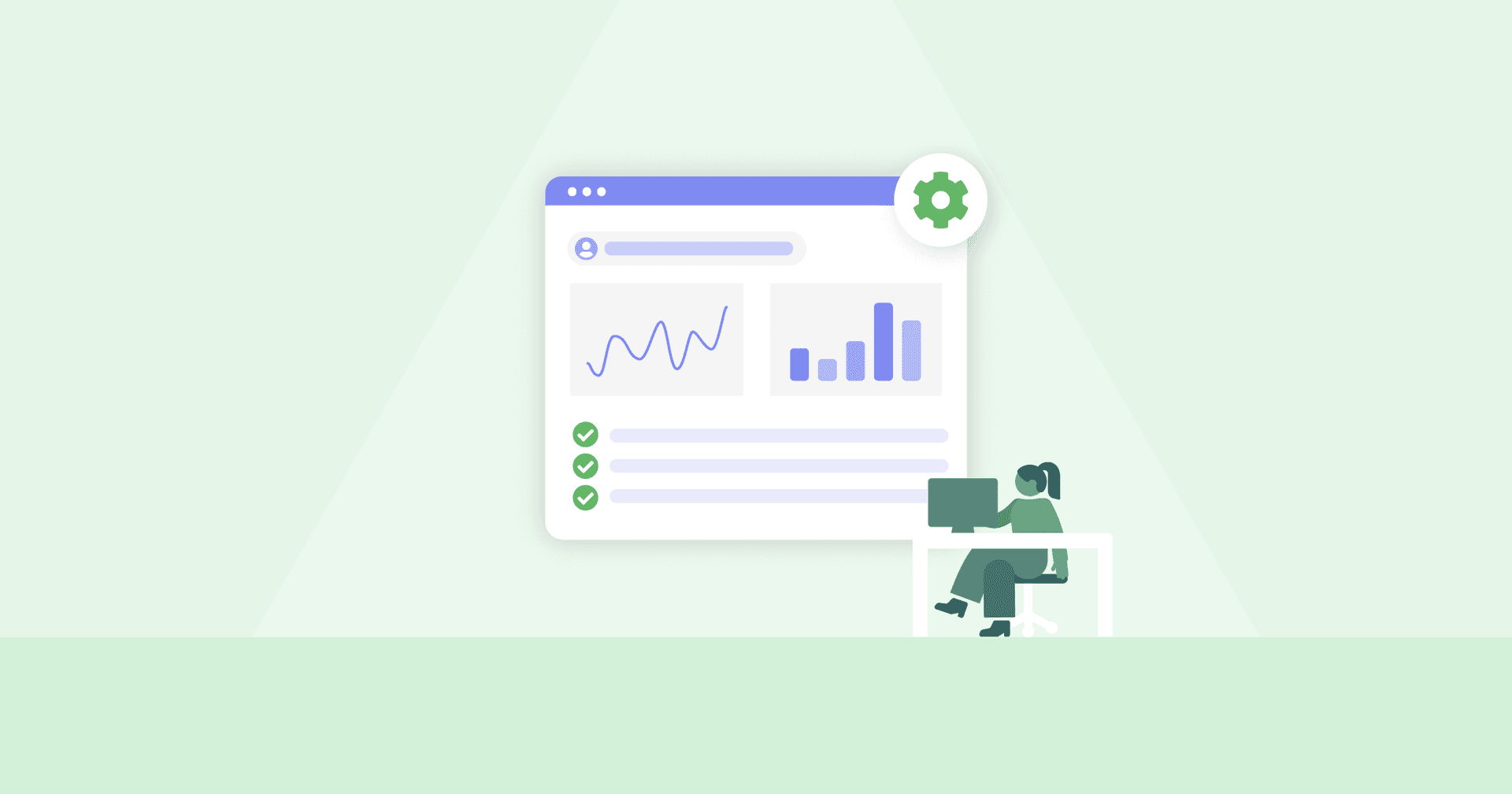Table of Contents
Table of Contents
- What is a Subscription-Based Pricing Model?
- How a Subscription-Based Pricing Model Benefits Your Agency
- Potential Drawbacks of Subscription Pricing Models
- How To Handle the Transition
- Client Communication Tips: Explaining the Value Proposition
- Common Subscription Pricing Mistakes and Solutions
- Market Research and Planning
- Designing Your Subscription Plans
- Make the Switch to a Subscription Pricing Model
7,000+ agencies have ditched manual reports. You can too.
Free 14-Day TrialQUICK SUMMARY:
Implementing a subscription-based pricing model has the potential to transform your marketing agency by providing stable income, increasing client retention, and boosting your agency's valuation. In this article, Adam Allen, Founder of LeaseMyMarketing, shares real-life stories from his agency’s experience implementing this pricing model, and outlines the benefits, including sustainable revenue, lower initial costs, and better financial predictability.
If you've ever felt like you're riding a roller coaster with your agency's revenue, you're not alone. The ups and downs of project-based pricing can be a wild ride, especially for new or small agencies. One month, you're celebrating landing a large project, and the next, you're anxious about finding the next big client.
How do you end the seemingly non-stop cycle of feast and famine? In my experience, the answer is to work towards implementing a subscription-based pricing model.
I'm Adam Allen, the founder of LeaseMyMarketing, and I've been down this path before. Picture this: stable income, happier clients, and a boost in your agency's value. Sounds like a dream, right? Well, it's totally doable. Allow me to tell you more.
What is a Subscription-Based Pricing Model?
A subscription-based pricing model for marketing agencies involves offering your traditional project-based services to clients on a recurring payment basis, typically monthly or annually.
Instead of charging clients a flat fee for individual projects, agencies provide continuous, ongoing services for a regular, predictable monthly fee.
For example, instead of charging $5,000 for a website based on a project fee, you might charge $200 per month as an ongoing "service fee."
SaaS companies have been doing this for decades. Microsoft, for example, started transitioning to subscription-based pricing models in 2013. I'm sure many of you reading this article remember the days when you bought software for a flat fee and then installed it locally on your device. But the times have changed for software companies–and agencies too.
Read More: Agency Pricing: How to Price Your Agency Services
How a Subscription-Based Pricing Model Benefits Your Agency
Traditionally, marketing agencies rely on project-based pricing or a flat-rate pricing model, which often leads to unpredictable cash flow, customer acquisition costs, and client retention challenges.
Transitioning to a subscription-tiered pricing model will address these issues. Here’s why:
More Sustainable Income Models
One reason I think a recurring revenue strategy is the best pricing model is because it offers more sustainable and predictable income streams.
Instead of relying on sporadic project payments, your agency counts on regular, recurring revenue, which allows for better financial planning and resource allocation.
Stable income also reduces the financial stress often associated with project-based billing cycles. Think about it: How often have you been in a situation where you're thinking to yourself, "I really need this big project to close"? Imagine never again having to feel that pinch.
Lower Initial Costs
Subscription models benefit your agency by lowering the barrier to entry for new clients. When you allow clients to start with a smaller upfront payment compared to a one-time purchase, you will attract a broader client base.
This approach makes your services accessible to businesses with tighter budgets, helping you grow your client roster and build long-term relationships.
Predictability
Predictable income makes forecasting revenue, managing expenses, and investing in growth opportunities easier. With a steady income stream, you plan for the future with greater confidence and less risk.
This predictability extends to client workload management, enabling more accurate scheduling and resource allocation. It also supports strategic decision-making, such as when to hire new staff or invest in new technologies.
Regular Updates and Improvements
One of the best parts about subscription models is that subscribers get regular updates, new features, and improvements without any extra costs. This means your clients will always have the latest technology and content, which makes their experience with your agency even better.
Similar to leasing a vehicle, subscription pricing allows customers to upgrade their websites to a premium version without paying for everything upfront. This means your clients access top-notch services and features without the huge initial cost.
For you, it translates to enhanced customer loyalty and satisfaction, a better reputation, and higher revenue.
Flexibility and Scalability
I have found that subscription models offer me more flexibility and scalability. By offering different tiers and plans, my business was able to cater to a wider range of clients with varying needs and budgets.
Plus, as customers' needs change, upgrading or downgrading their plan is easy, ensuring that my services remain relevant and valuable. This adaptability helps me retain clients and grow my business more effectively.
Better Budget Management
One of the biggest perks of subscription pricing is its financial predictability. With clients on fixed monthly or annual fees, you avoid the stress of large, sporadic payments and plan your budget more effectively.
A steady income stream allows you to better manage your resources, invest in growth opportunities, and maintain financial stability.
Access to Premium Support
Subscription services often come with enhanced customer support, meaning your clients get prompt assistance and solutions to their problems. This level of support is a major selling point because it shows your clients that you’re there for them whenever they need help.
Performance Monitoring
With ongoing engagements, agencies continuously monitor and adjust strategies based on performance data. This ensures that marketing efforts are optimized for the best results over time.
This ongoing customer relationship management also allows for real-time feedback and iterative improvements, leading to more effective campaigns and higher client satisfaction.
Regular performance reviews and adjustments significantly enhance the return on investment (ROI) for clients, making your services indispensable.
Increased Customer Lifetime Value (CLV)
My experience has been that long-term contracts and more engaging customer relationships increase the overall revenue from each client.
As my agency provided ongoing value, our customers' loyalty and satisfaction were enhanced, leading to much higher customer retention rates. This fosters a stable client base that continues to contribute to the agency's long-term success.
Continuous engagement allows for a deeper understanding of client needs and more personalized service.
I recommend building trust and rapport with your clients through regular interaction to make them more likely to stay with your agency over the long term.
This ongoing relationship enables you to anticipate client needs, offer proactive solutions, and demonstrate consistent value.
Upgrades and Upsells
Customers pay for results.
The longer a client stays with your agency, the more opportunities there are to upsell additional services and deepen the relationship.
Agency Tip: Upsell Using AgencyAnalytics! My agency leverages AgencyAnalytics to create comprehensive dashboards that showcase the success stories within our existing customers' specific service packages. These dashboards also highlight additional services that clients may not yet be investing in. With our subscription pricing model, we are able to encourage upgrades seamlessly.
This approach allowed our clients to gradually increase their investment as they saw tangible results, something that was much more challenging with the project-based fixed pricing model.

Create custom white labeled dashboards for clients in 11 seconds flat with Smart Dashboards! Seamlessly pull data from more than 80 platform integrations and grant clients access 24/7. Try AgencyAnalytics free for 14 days!
Efficient Resource Utilization
Consistent workloads enable better planning and utilization of agency resources and staff. As my team and I have discovered, with a steady stream of projects and tasks, it’s easier to effectively manage your team's time and skills, reduce downtime, and increase productivity.
This efficiency, in turn, improves service delivery and enhances employee satisfaction by providing a more predictable and manageable work environment. Efficient resource utilization leads to higher profitability and better overall performance for your agency.
Read more: Unlocking Your Agency’s Growth Potential with Delivery Margin Optimization
Higher Sell Multiple Valuation for Exit
One significant benefit of a subscription-based business model is the increased valuation it may bring to an agency.
Recurring revenue is highly attractive to potential buyers or investors, leading to a higher sell multiple. This means you could command a higher price if you ever decide to sell the agency.
The predictability and stability of a monthly recurring revenue income make your business more appealing, as it indicates a steady agency cash flow and less risk for new owners.
Read More: An Agency Owner’s Guide to Equity Partnerships
Potential Drawbacks of Subscription Pricing Models
While there are countless benefits to implementing a subscription based model at your agency, I’d be remiss to exclude some of the drawbacks. Here are a few to consider:
Initial Resistance From Prospective Clients
Some prospective clients may be reluctant to move forward with monthly subscription pricing models due to unfamiliarity with the concept or concerns about long-term commitment.
However, in my experience, I was able to overcome this hesitation by clearly communicating the benefits, such as the reduced impact on customer cash flow, ongoing support, predictable budgeting, or even the ability to receive truly premium products or services they may not be able to afford with traditional project pricing.
Ownership Issues
With project-based pricing, the client typically has full ownership over everything produced. The risk to the agency is fairly low in these scenarios because the client pays for the service upfront before the rights are turned over to them.
In a subscription business, the agency takes on greater risk by performing the bulk of the work upfront, like with a website project. To accommodate this risk, the agency needs to retain certain assurances so clients can't simply cancel after 3 months while retaining the website.
A common concern you might encounter is clients wondering who owns the content or website in a monthly plan scenario. Clarifying ownership terms upfront is crucial to avoid misunderstandings.
I found a happy medium with clients is when the client retains ownership of their content while we, as the agency, manage and update the site. This way, clients feel secure knowing their content is theirs, but we handle the technical aspects.
Ongoing Investment
One challenge that I often face with customers is the perception that once a website is launched, there's little left to do. It's important to educate clients that while most of the work is done upfront, ongoing maintenance, updates, and improvements are necessary.
What I've found effective is infusing additional low-cost value, like offering ongoing support and the opportunity to redesign the website every 3 to 5 years. This approach helps clients understand the continuous nature of website management and keeps them engaged with your services.
Need for Robust Systems To Manage Subscriptions
Implementing a subscription pricing model requires effective systems for billing, renewals, and customer support. This necessitates investment in reliable software for automated processes and CRM integration.
Regular maintenance is essential to keep these systems running smoothly and to prevent administrative burdens.

AgencyAnalytics integrates with more than 80 marketing platforms, including CRM solutions like HubSpot and Salesforce. Keep track of clients and projects and view status at a glance–try AgencyAnalytics free for 14 days.
Potential for Increased Customer Service Demands
Subscription clients often expect higher levels of service and support, which may increase demands on your customer service team.
To manage this, set clear expectations with clients early, and detail exactly what types of activities will be covered within their specific price point. Invest in staff training, hire additional support personnel, and implement enhanced support tools and processes to further mitigate this risk factor.
How To Handle the Transition
The transition to a subscription-based pricing model is attractive in many ways. Still, as I've found, it is also challenging, particularly if your agency is accustomed to upfront capital from project-based pricing.
Managing this shift requires careful planning and communication with your clients.
Practical Steps for Offering Subscription Pricing
I recommend the following practical steps to handle the transition smoothly:
Don't Go Cold Turkey: Avoid a sudden switch from project-based to subscription pricing models. Gradually introduce subscription options while still offering traditional project pricing. This phased approach allows your agency to adjust processes and manage finances more effectively.
Offer a Hybrid Pricing Model: Offer a mix of one-time project fees and recurring service fees. A hybrid approach to your subscription pricing strategy for new customers will provide the immediate capital you need while building a recurring revenue base.
Be Prepared To Explain the Benefits: Your new customer base might not be expecting subscription pricing. In other words, you need to be prepared to answer the question: "Why should customers pay you a monthly fee for their website? Let’s explore this factor in greater detail.
Client Communication Tips: Explaining the Value Proposition
One of the most critical factors in transitioning your agency to a subscription based pricing model is to thoroughly explain the benefits to your clients. Here are some helpful tips.
Script for Initial Client Conversations
Introduce the subscription model to your clients using clear communication. Here’s an example script to guide your conversations:
"Hi [Client Name], we've been looking at new ways to add even more value to our services, and we're excited about our new subscription-based model. This approach means you'll get continuous support and proactive management of your marketing needs. You’ll benefit from ongoing optimization and immediate campaign adjustments, ensuring sustained growth and performance. Plus, with a predictable monthly fee, you can plan your budget without surprises. We believe this will help your business grow steadily and smoothly."
Read More: How To Ask a Client to Increase Their PPC Budget
Handling Common Objections
Your potential customers may have concerns about subscription pricing. Address these proactively:
Objection | Response |
|---|---|
We prefer to pay per project. | I completely understand your preference. However, let me explain how our subscription business model can provide greater value. With a subscription, you receive continuous improvements, updates, and support without renegotiating terms or paying extra for each project. This saves you time and effort and ensures your marketing efforts remain agile and responsive to changes in the market. Additionally, the predictable monthly fee helps you manage your budget more effectively, avoiding the large, unexpected costs that can come with project-based billing. |
What if we don’t need services every month? | I understand your concern. Our subscription plans are flexible, and we can adjust the level of service each month based on your needs. This way, you only pay for what you use, so you always get value without unnecessary costs. |
Common Subscription Pricing Mistakes and Solutions
While the subscription model offers agencies like ours plenty of benefits, it may also present challenges. Here are some common mistakes to avoid as you transition and examples of how to overcome them.
Mistake 1: Underestimating Client Resistance
Solution: Educate your clients thoroughly and provide clear, tangible benefits. I’ve found that using data and case studies to show how other clients have benefited from the subscription model can be very persuasive.
Mistake 2: Inadequate Internal Training
Solution: Ensuring your team is well-trained on the new model is essential. I recommend providing workshops and ongoing support to address any questions or concerns they might have. This has worked well for us in ensuring everyone is on the same page.
Mistake 3: Overcomplicating the Pricing Structure
Solution: Keep your pricing model simple and transparent. Our clients appreciate straightforward pricing that allows them to see the value they’re receiving for their investment easily.
Market Research and Planning
Before transitioning to a subscription-based pricing model, you will need to do thorough market research and planning. Here are some steps to guide you:
Identify Your Market
One of the most important things you can do as a business is to understand your target audience or ideal client profile and their needs. Conduct thorough market research to identify your customer segments and your ideal subscribers. The insight you gain will help tailor your subscription offerings to meet their specific needs and preferences.
Competitive Analysis
I always recommend analyzing competitors who are already using subscription models. Use a competitor analysis tool and learn from their successes and mistakes to refine your approach.
Look at what works well in their pricing structures, marketing strategies, and customer acquisition and retention efforts, and keep notes for how that might apply to your own client base.
Value Proposition
Clearly define the unique value your subscription will offer new customers. What sets your service apart from the competition?
Highlight your unique selling points to attract potential new customers and subscribers who see the distinct benefits of your offering.
Designing Your Subscription Plans
When designing your subscription plans, remember that customer needs and budgets differ, and it's important to cater to everyone.
Here are some tips to help you create effective and appealing subscription tiers:
Tiered Pricing
Create different pricing tiers or levels of service (e.g., basic, standard, premium) to cater to various customer needs and budgets.
Each tier should offer progressively more features and benefits, providing value at every level.
Pricing Strategy
When setting prices, consider factors like cost, perceived value, and competitor pricing strategies. Make sure your pricing strategy aligns with the value you're providing and is competitive in the market.
I recommend testing different price points to determine the most effective pricing model.
Features and Benefits
Clearly detail the features and benefits included at multiple price points for each subscription level. Communicate what subscribers will get at each tier and emphasize the value and convenience of each package. This helps potential customers understand the benefits of subscribing to your service.
Make the Switch to a Subscription Pricing Model
Transitioning to subscription-based pricing models brings numerous benefits to your marketing agency and sales process, including stable income, increased client retention, and higher valuation.
While the transition may be challenging, strategies such as starting with monthly maintenance programs, implementing hybrid pricing models, and gradually introducing subscription plans will ease the process.
By embracing the learning curve, communicating value, and leveraging technology, your agency will be able to successfully implement a subscription-based pricing model and enjoy the long-term benefits it offers–just like LeaseMyMarketing.

Written by
Adam Allen founded LeaseMyMarketing, a Pennsylvania-based marketing agency, in 2015 to help small and medium-sized businesses access and understand their marketing data for informed decision-making. With over 20 years of corporate marketing experience, Allen knew he could apply the same data-driven approach that makes large corporations successful and apply it to their regional and national clientele to create a meaningful marketing impact.
See how 7,000+ marketing agencies help clients win
Free 14-day trial. No credit card required.






